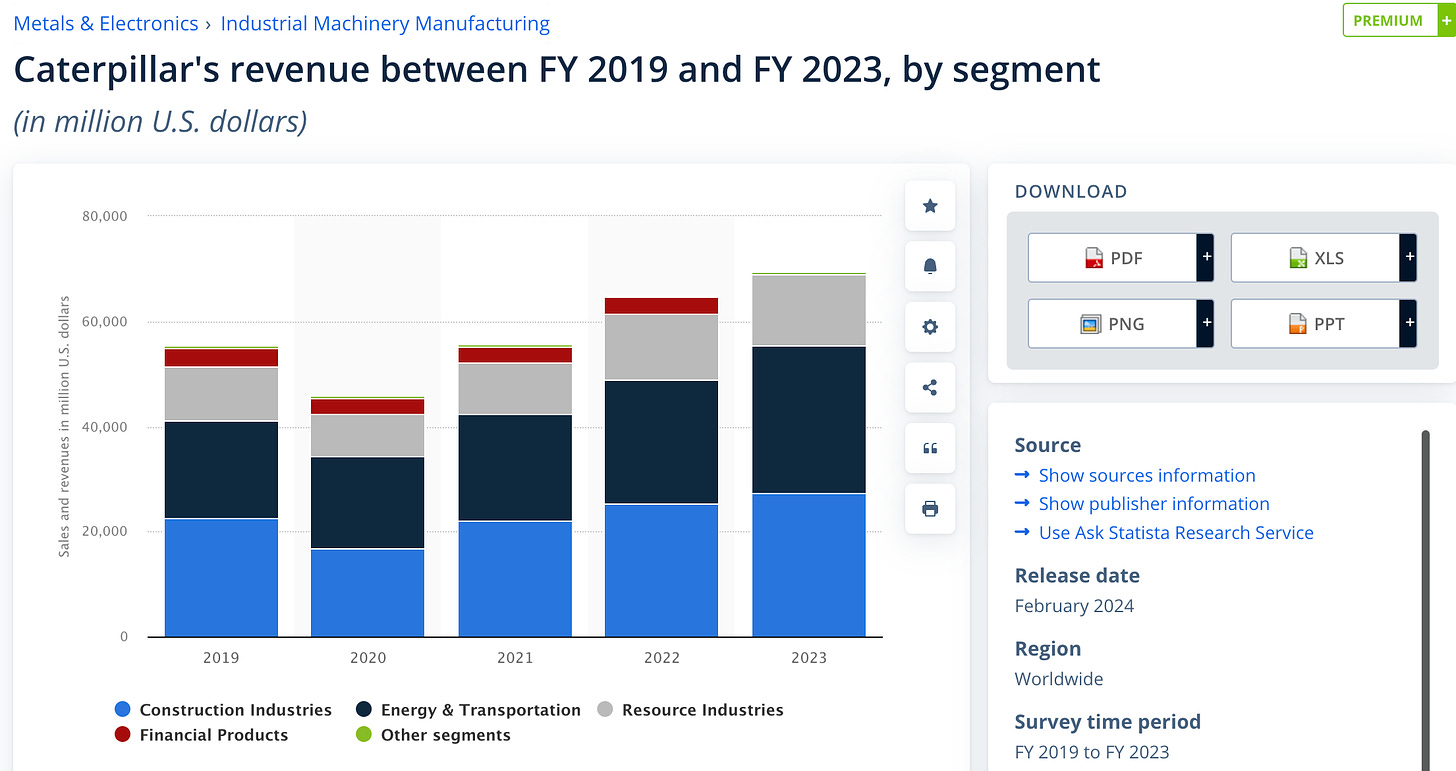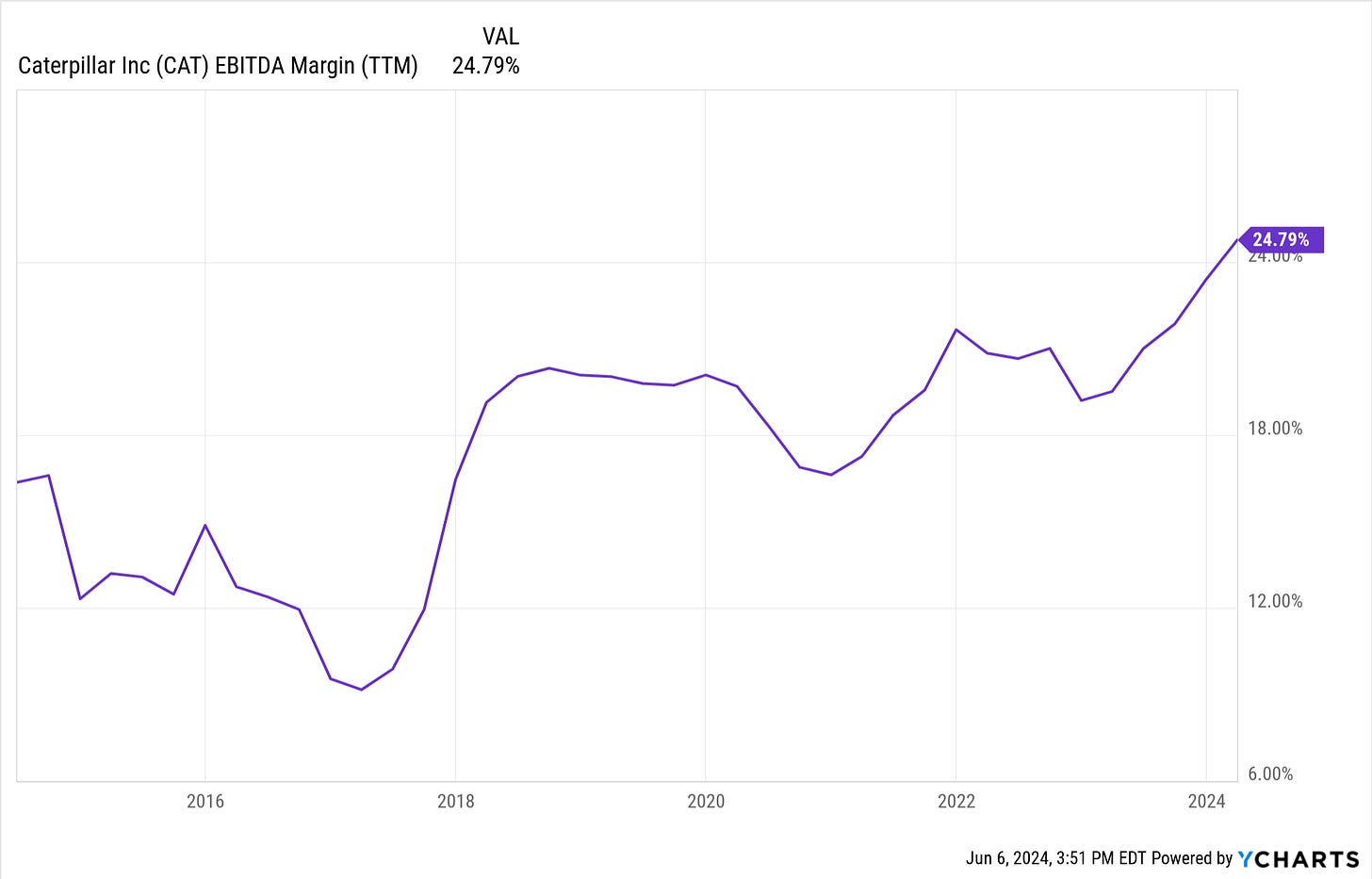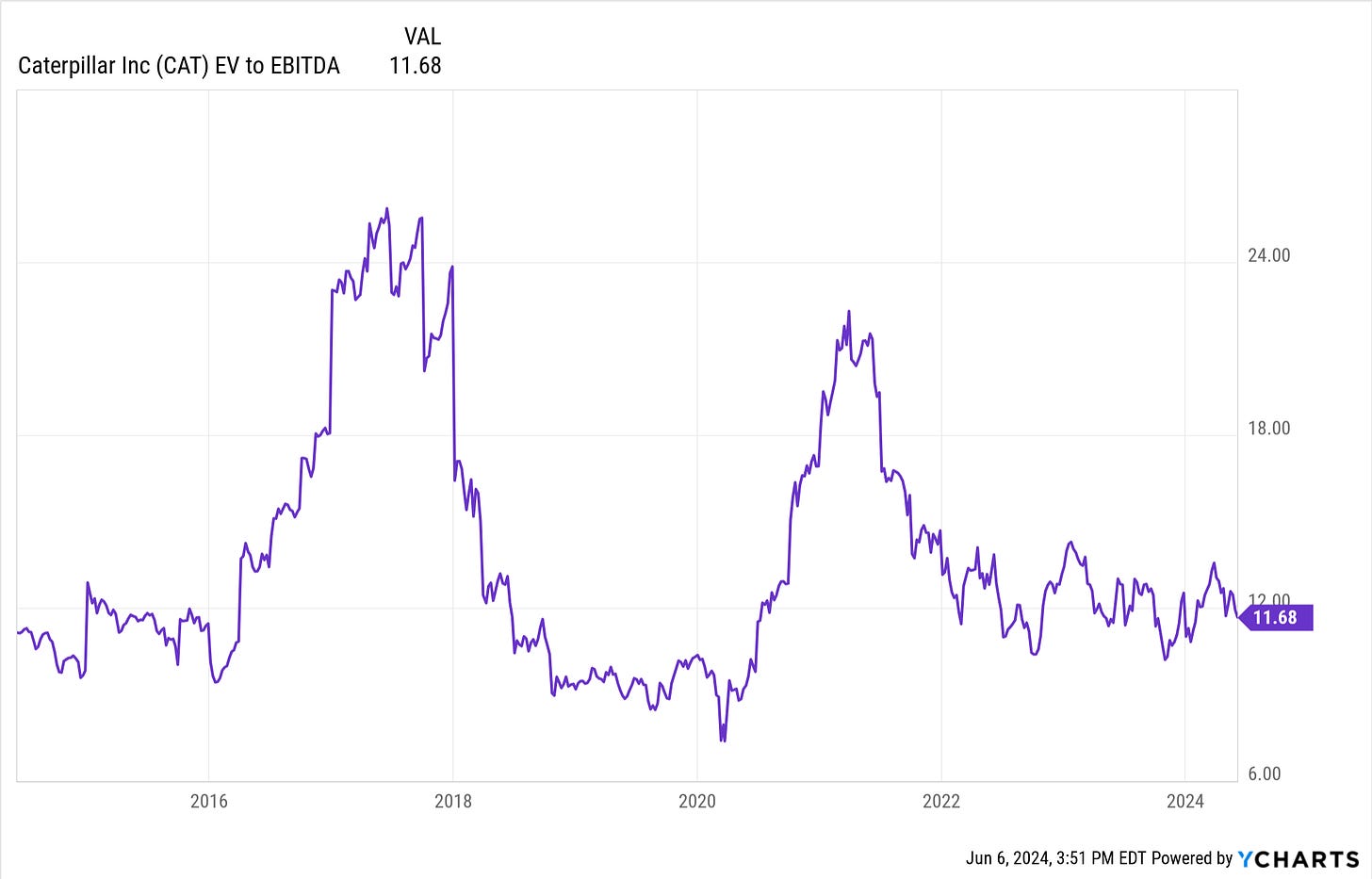Caterpillar DCF Discussion/Context
CAT is a less discussed blue-chip name among retail investors as it does not generate the buzz that internet/tech/AI stocks have in media outlets.
I will attach a barchart of the company’s revenue breakdown by segment since most investors do not follow Caterpillar as closely or are familiar with their business model.
Their largest client is the U.S. government, and the stock trades based on the perception of future demand on infrastructure projects across construction, energy & transportation. Wall Street estimates that “active mega projects” in the U.S. (which are classified as >$1B) total about $122 billion. The larger for this figure, the more robust Caterpillar’s business.
A secondary catalyst that has helped CAT gain favor in 2024 to demonstrate relative strength to the Dow is the fact that they are positioned to be the infrastructure-builder for advanced facilities in the AI/data center industries.
Exhibit 1: DCF Core Figures from 2024
Here are the conclusions that I’m drawing:
Similar to Home Depot’s growth profile in the Dow, Caterpillar looks to grow in the mid-single digits in the years ahead.
CAT’s EBITDA margins rise in the 3-5% region on a yearly basis, which is also consistent with a blue-chip mature type of business
Wall Street doesn’t expect much EBITDA margin expansion for CAT, but given that the U.S. government is CAT’s largest client, the Sellside forecast expects very stable and consistent margins going forward.
Catalysts for Caterpillar:
Extended U.S. construction cycle and number of “large” infrastructure projects across the country
Build out of new facilities for AI Data Centers that will power the AI revolution
Stronger than expected infrastructure build demand that can be proxied with architecture billings
Margin Commentary (Margins are incredibly important to the DCF Model):
Biden’s $1 trillion infrastructure law to upgrade roads and bridges in the U.S. has helped CAT see higher prices across its machinery divisions, helping to lift its margins to a 10-year high for the company.
Commercial construction, which is 75% of CAT’s business model, is expected to keep stable margins due to a strong backlog of demand that protects the company’s pricing power.
Investors view China as a call option for Caterpillar because of dampened construction spending (due to weaker home construction activity post real-estate bust).
There is a case to be made that Caterpillar’s margins can increase from here (but marginally) if U.S. infrastructure projects continue to be robust and China’s real estate construction sector rebounds.
Valuation
Caterpillar’s valuation is cyclical as investors judge the long-term construction cycles that the U.S. goes through and the perceived demand of increased mega projects. Additionally, strength in Europe and China’s construction spending and development are factors in CAT’s valuation.
As of now, most investors have downsized expectations for Europe/China construction spending to be softer for the intermediate-term.
This means that CAT’s valuation has meaningful valuation expansion opportunity - if there is a case for a global economic expansion.
DCF Model Outcomes/Scenario Analysis:
The most important inputs in my opinion are 1.) Top Line Growth (Sales) 2.) EBITDA Margins (profitability) and 3.) Valuation Multiple EV/EBITDA (what Investors Pay).
In all scenarios below, I will assume Wall Street Revenue estimates are accurate. The inputs that I change are EBITDA Margins and the EV/EBITDA Multiple. Changing revenue estimates do not move the needle by that much.
I will use more conservative inputs for EBITDA margins and the EV/EBITDA multiple.
Scenario 1 Assumptions:






